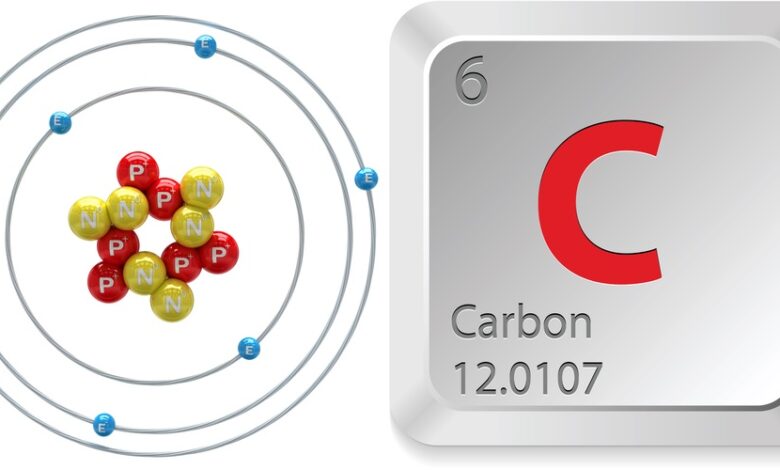
In the vast tapestry of the periodic table, one element stands out as the very backbone of life itself – carbon. Symbolized by the letter C and holding atomic number 6, carbon is a fundamental building block present in every living organism and countless compounds that shape the world around us. In this exploration, we embark on a journey to unravel the significance of cảbon, delving into its myriad forms, roles in the natural world, and its profound impact on the essence of life.
The Elemental Foundation: Carbon’s Basics
Carbon, a non-metal with a unique ability to form diverse compounds, plays an indispensable role in the biochemistry of living organisms. Its name, derived from the Latin word “carbo,” meaning coal, reflects its ubiquity in organic matter. Carbon’s atomic structure allows it to form stable covalent bonds with other elements, creating a rich diversity of molecules that serve as the building blocks of life.
One of the key features that define carbon is its tetravalency – the ability to form four covalent bonds. This characteristic allows carbon to create complex molecular structures, forming the intricate frameworks of molecules such as proteins, nucleic acids, carbohydrates, and lipids. The versatility of carbon bonds is the foundation of the staggering complexity and diversity observed in biological molecules.
Carbon’s Allotropes: Diamonds, Graphite, and Beyond
Beyond its organic compounds, carbon manifests in a variety of allotropes, each with distinct properties. Diamonds, with their crystalline structure and unparalleled hardness, are formed deep within the Earth under immense pressure. In contrast, graphite, with its layers of hexagonally arranged carbon atoms, is a lubricant and the primary component in pencils. These two allotropes showcase the extreme range of properties carbon can exhibit based on its arrangement.
Fullerenes, another fascinating form of carbon, consist of hollow spheres, ellipsoids, or tubes. These molecules, also known as buckyballs or buckytubes, have intriguing potential in various technological applications, including nanotechnology and drug delivery systems. Carbon nanotubes, in particular, are celebrated for their strength, electrical conductivity, and thermal properties, making them a subject of intensive research in material science.
The Carbon Cycle: Life’s Eternal Recycler
The carbon cycle is a crucial natural process that maintains equilibrium in the Earth’s atmosphere. It involves the circulation of carbon through the atmosphere, oceans, soil, and living organisms. Plants play a pivotal role in this cycle through photosynthesis, converting carbon dioxide from the atmosphere into organic compounds. Animals, in turn, consume these plants, incorporating carbon into their tissues.
The cycle continues as animals and plants die, and their remains decompose, returning carbon to the soil. Over geological timescales, some carbon becomes fossilized, forming coal, oil, and natural gas. Human activities, particularly the burning of fossil fuels, have disrupted this cycle by releasing vast amounts of carbon dioxide into the atmosphere, contributing to global climate change.
Carbon in Organic Compounds: The Essence of Life
Organic compounds, those containing carbon, are the foundation of life as we know it. Proteins, which serve as the building blocks of tissues, muscles, and enzymes, consist of chains of amino acids, each containing carbon. Nucleic acids, including DNA and RNA, store and transmit genetic information with the help of carbon-based sugar molecules. Carbohydrates, vital for energy storage and release, are composed of carbon, hydrogen, and oxygen.
The hydrocarbons found in lipids, including fats and oils, are also primarily composed of carbon and hydrogen. These organic molecules not only constitute the physical structures of living organisms but also participate in a myriad of biochemical reactions that sustain life processes. The complexity and diversity of carbon-based compounds are the essence of the extraordinary biological systems that have evolved on Earth.
Carbon in Technology: Beyond Biology
While carbon’s role in biology is undeniable, its impact extends far beyond the realms of living organisms. In the field of materials science, carbon composites have revolutionized industries. Carbon fiber, composed of thin strands of carbon tightly woven into a matrix, is known for its exceptional strength-to-weight ratio. This makes it an essential component in aerospace, automotive, and sports equipment, contributing to the development of high-performance materials.
Activated carbon, with its high surface area and adsorption capacity, finds applications in water purification, air filtration, and even medicine. Carbon’s conductivity properties have led to the development of graphene, a single layer of carbon atoms arranged in a hexagonal lattice. Graphene’s remarkable electrical, thermal, and mechanical properties have spurred research into innovative technologies, including flexible electronics and advanced energy storage systems.
Carbon in Climate Change: A Double-Edged Sword
While carbon is the backbone of life, its presence in excess in the form of carbon dioxide contributes to one of the most pressing global challenges – climate change. Human activities, particularly the burning of fossil fuels, deforestation, and industrial processes, release large quantities of carbon dioxide into the atmosphere, intensifying the greenhouse effect.
This enhanced greenhouse effect traps heat in the Earth’s atmosphere, leading to rising global temperatures, changes in weather patterns, and more frequent and severe extreme events. The delicate balance of the carbon cycle is disrupted, emphasizing the urgent need for sustainable practices, renewable energy sources, and global efforts to mitigate the impact of anthropogenic carbon emissions.
The Future of Carbon: Sustainability and Innovation
As we navigate the complexities of carbon’s roles in biology, technology, and climate change, the future holds both challenges and opportunities. Embracing sustainable practices, transitioning to renewable energy sources, and developing innovative technologies are crucial steps in mitigating the impact of excess carbon in the atmosphere.
Carbon capture and storage technologies, afforestation efforts, and the development of alternative energy sources are among the avenues being explored to address the challenges posed by excessive carbon emissions. The scientific community and industries alike are actively engaged in finding ways to harness carbon’s potential for positive change, balancing its role as the foundation of life with the imperative to protect the planet.
Conclusion: The Eternal Dance of Carbon
In the grand symphony of the elements, carbon takes center stage, orchestrating the dance of life across the cosmos. From the organic compounds that define biological existence to the materials that shape our technological landscape, carbon’s versatility is unparalleled. However, as we marvel at its contributions, we must also confront the challenges posed by the excessive release of carbon into the atmosphere.
Exploring the element at the heart of life, cảbon reveals itself as a fundamental force, driving the intricacies of biological systems and the innovations of human endeavors. The ongoing dialogue surrounding carbon encompasses a spectrum from the molecular intricacies of organic compounds to the global challenges of climate change. As we venture into the future, our understanding of carbon’s roles and responsibilities will play a pivotal role in shaping a sustainable and harmonious coexistence with the very element that breathes life into our existence.


